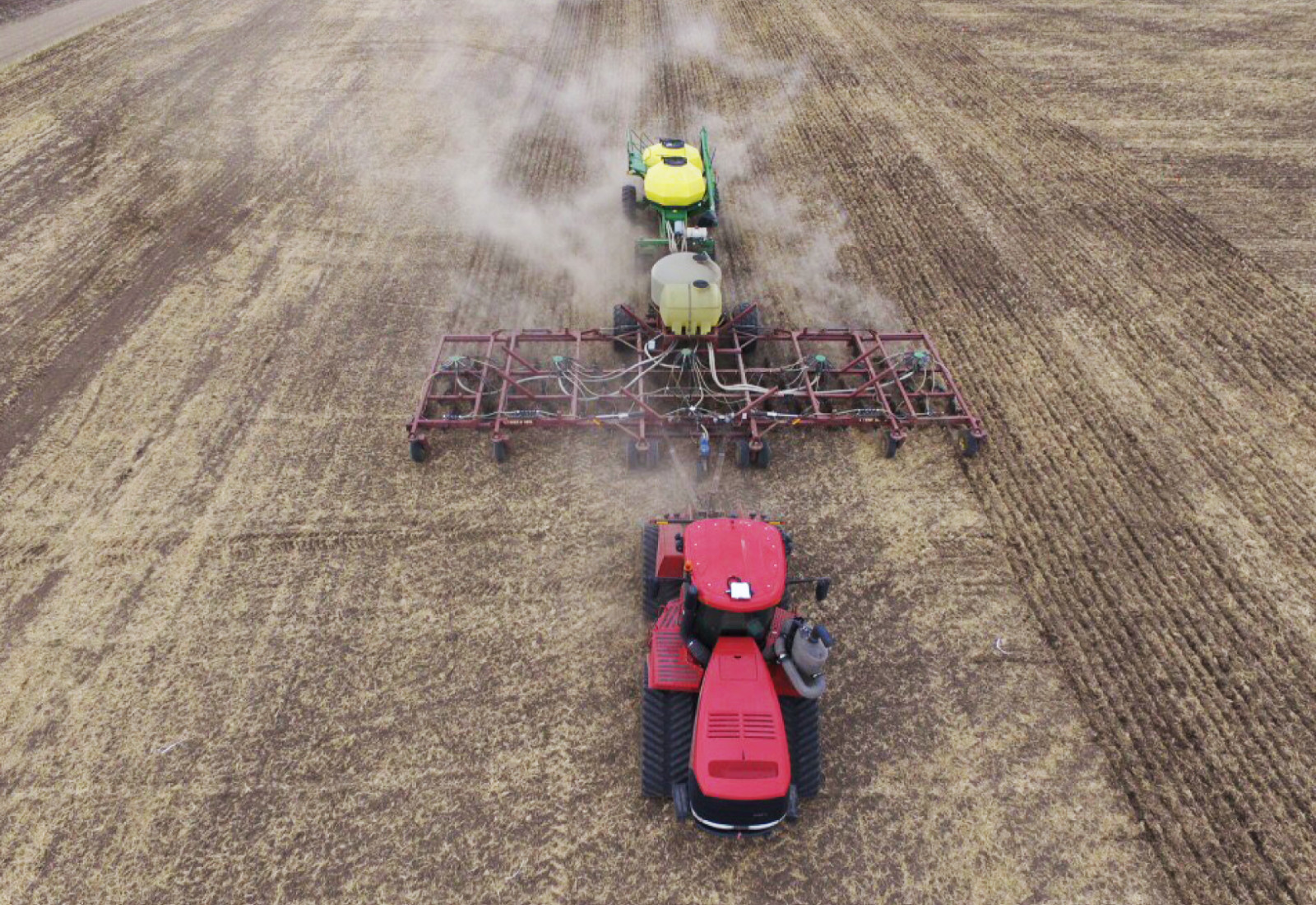Better Beds Mean Better Beans

By Geoff Geddes
Whether you’re a baby or a soybean, how you start in life has an impact on how you finish. While soybeans may be slightly less demanding than a newborn, they still need to start strong with a good seedbed to ensure success. Like much of farming, making that happen requires a little luck and a lot of preparation.
“Because the climate in our area is cooler than what soybeans are normally grown in, preparing the seedbed correctly is vital to get your crop launched well and finished quickly before the frost hits in the fall,” says Julie McGill, AgIntelligence Specialist for Blair’s in Liberty, Saskatchewan.
Hit the ground running
“From a temperature standpoint, seeding of the soil should begin at 10°C,” said McGill.
The right nutrients are also critical for the seedbed. Soybeans are big users of phosphorus and potassium, yet they don’t like it in the year of planting, so it’s better to have the soil pre-loaded.
“The soil in our area is high in potassium, so phosphorus is more the focus. Soybeans also need sulphur to produce oil within the seed.”
The main nutrient for soybeans is nitrogen, with 4.6 lbs/bushel required to make a crop. In McGill’s region, they inoculate the seeds with a bacterium and do a double inoculation for first-time growers to ensure proper nodulation, as bacterium is not native to the area.
Roundup and burndown
Another consideration for seedbeds is burndown preparation.
“Since the soybeans we use here are Roundup Ready®, we apply glyphosate in season; however, multiple rounds of glyphosate can cause resistance so you need to employ tank mixing with a product like BlackHawk®, Edge® or Authority® to prevent that.”
Burndown is less of a factor near Portage la Prairie, where tillage is more the rule than the exception.
“Most farmers here use a cultivator in the fall and then do a vertical till to level the field,” said Taralea Simpson, an agrologist and assistant manager of Munro Farm Supplies in Portage la Prairie. “Rolling is also fairly common to push down any stones or branches that might be around and level out the seed bed.”
For seed placement, Simpson recommends 1 to 1.5 inches deep.
“If it’s drier I don’t mind going to 2 inches, but going lower than 1 can be dicey. I’ve seen crops stranded at ¾ inch with no moisture for ten days; it’s not worth the risk.”
Though Simpson is also a big believer in nutrients, she cautions against a “one size fits all” approach in her area.
Getting testy
“I recommend a soil test for everyone to see where they’re at and what they need. Then they can decide how to address their nutrient needs and whether that will involve taking action with the previous year’s crop or banding nutrients in the fall or prior to seeding.”
In Altona, Manitoba, they also stress seedbed preparation and are equally emphatic about target temperatures.
“You want to seed early but into warm soil of 10°C or higher,” said Art Kehler, an agronomist with GJ Chemical Co. “As long as the soybeans absorb water at that temperature you are home free, even if the temperature then drops.”
For his region, Kehler said the three most important things for soybeans are “inoculation, inoculation and inoculation”.
“With our weather conditions here the rhizobia don’t always survive when it’s cold and wet, so inoculation is a must. When you’re paying a lot for your seeds, you shouldn’t limit their potential by minimizing this step.”
Kehler’s favorite recommendation for burndown is a glyphosate/Express® tank mix as it helps with dandelions and other weeds and offers some residual control of a local hazard.
“We are close to a crushing plant here so Roundup Ready canola is all over the place. It’s our biggest weed issue with soybeans right now and the glyphosate/Express® combination gives us a week of flushing control.”
A strong start may not be everything, but when you’re preparing seedbeds or raising kids, it sure beats the alternative.



